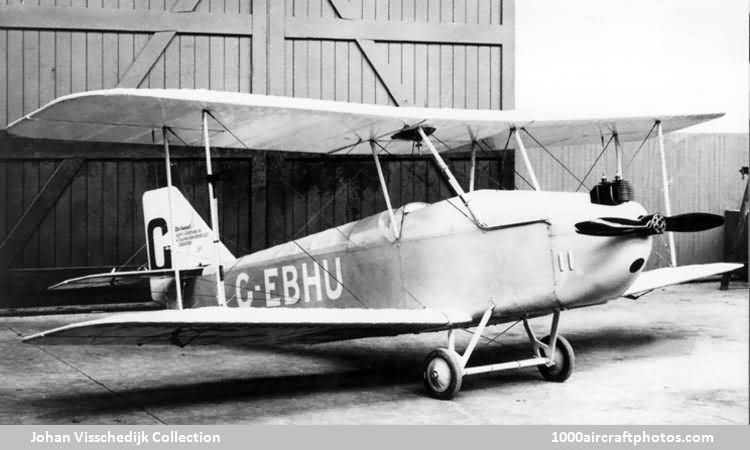The Gannet was of all-wood construction with only a minimum of metal fittings being used. The fuselage, which was built up from four ash longerons, had a small fixed lower center section, flat plywood sides, a deep top fairing and a shallower bottom fairing of spruce stringers on light plywood formers, all of which was fabric covered. The thick wings had I-section spruce spars and ribs which were built up from cut-out three-ply webs with spruce flanges and struts and internally braced with round-section wires. Four streamlined tubular-steel struts supported the top wing center section-which housed the 2 Imp. gal (9.1 l) fuel tank and similar tubing was used to form the interplane struts.
Streamlined flying wires braced the folding wing structure which was arranged to fold at the top and bottom rear spar with quick release pins in the four front spar attachment points. The trailing edges of the top and bottom center section were hinged to fold c1ear of the wings in their folded position; the top center section trailing edge could also be folded up to allow the pilot to enter and leave the cockpit. Spruce landing gear struts and a streamlined axle with rubber shock absorbers were also used. Large semi-span ailerons were fitted on all four wings and the tail unit had an unbalanced rudder and elevators, all fabric covered.
Particularly remarkable in concept was the Carden 750 cc two-cylinder two-stroke engine which was specially developed for the Gannet. Only one aircraft was built, registered as G-EBHU on September 15, and first flown on October 23. Although at the Lympne Trials it carried competition number 7, the Carden engine had not been sufficiently proven before fitting in the Gannet, and persistent overheating and oil failure prevented Folland's entry from taking any part in the flying program. In 1924 the Carden engine (seen in the picture) was replaced by a 7 hp Blackburne Tomtit 690 cc two-cylinder inverted V-engine, while larger wheels were fitted also.
G-EBHU was never entered for subsequent Light Aeroplane Trials and, although it was maintained in an airworthy condition, it was rarely flown and its registration was cancelled on January 25, 1928. Gloucestershire Aircraft Co. Ltd. was renamed Gloster Aircraft Co. Ltd. on December 11, 1926."
|
|
Carden engined |
Blackburne engined |
